Jolla
Latest
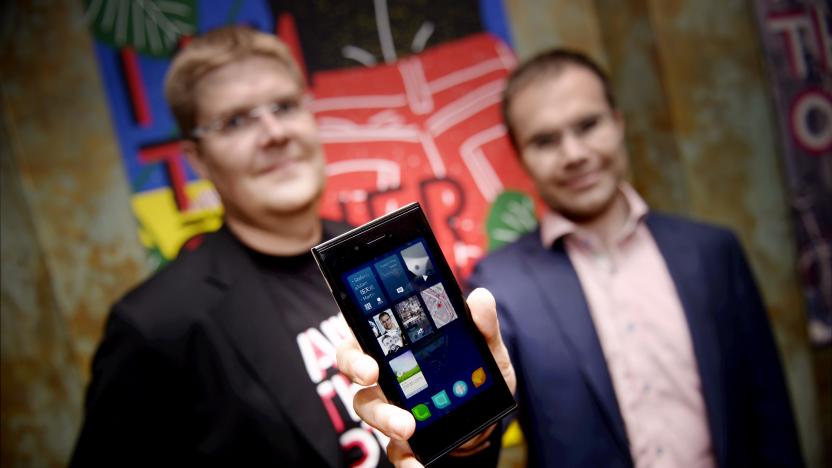
Jolla says it’s trying to part ways with its major Russian stakeholder
Jolla's board chief says that the company needs to get rid of a Russian ownership stake in order to thrive.
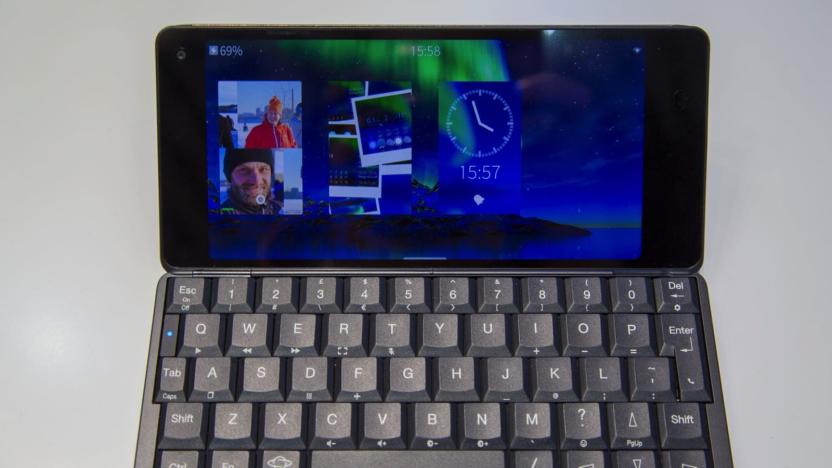
Sailfish for the Gemini PDA lets you ditch Android
The Gemini PDA is a throwback to the days when people thought they needed a physical keyboard to manage their portable devices. Sailfish OS is an Android alternative based in part on Nokia's MeeGo project and created for the Jolla phone that works on the Gemini as well as a number of Sony's Xperia handsets. Now the Gemini PDA will feature Sailfish officially; it will also be available to download (as Sailfish X) in late 2018.
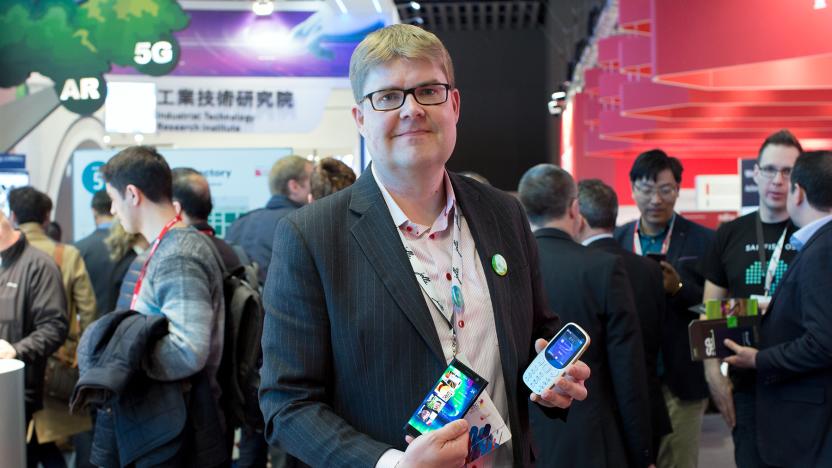
The Finns who refuse to give up on Sailfish OS
Wander the halls of Mobile World Congress and you'll notice a theme on almost every phone manufacturer's stall: Android. Google's operating system has slowly suffocated every "alternative" adversary including Firefox OS, Ubuntu Touch and Windows Phone. But in the middle of hall five you'll find an unlikely holdout -- Sailfish, a quirky mobile platform by Tampere-based developer Jolla. Walk by the company's stall and you'll find a small group of Finnish employees eagerly showing off the few phones that run their swipe-based software. They're grinning like children, which is no surprise given the hell they've been through to get here. Most people know Jolla for its quirky 'other half' phone. It was the first hardware to run Sailfish OS -- a continuation of the MeeGo platform that Nokia abandoned for Windows Phone -- and boasted swappable backs that could add new hardware features and themed software. Jolla hoped brands would build backs for their most devout fans — a Real Madrid cover, for instance, might come with custom wallpaper, ringtones and an app for watching matches -- but few embraced the idea. Still, the hardware was intriguing because of the operating system it shipped with. In a sea of Android conformity, Jolla stood out.

I found a Gemini PDA running Sailfish OS, and it was wild
At CES, a certain portion of Engadget's staff fell in love with the Gemini, a reimagining of the Psion PDA from the late 1990s. If the promise of a dual-booting Android and Linux phone had you drooling at the mouth, strap in, because I've just seen the same hardware running Sailfish OS. That's right, the alternative mobile operating system that Jolla has been working on since 2011. It's one of the strangest and most surprising phone collaborations of 2018, and I can't help but applaud the audacity of it all. The only problem is that the phone isn't very fun to use -- not yet, anyway.
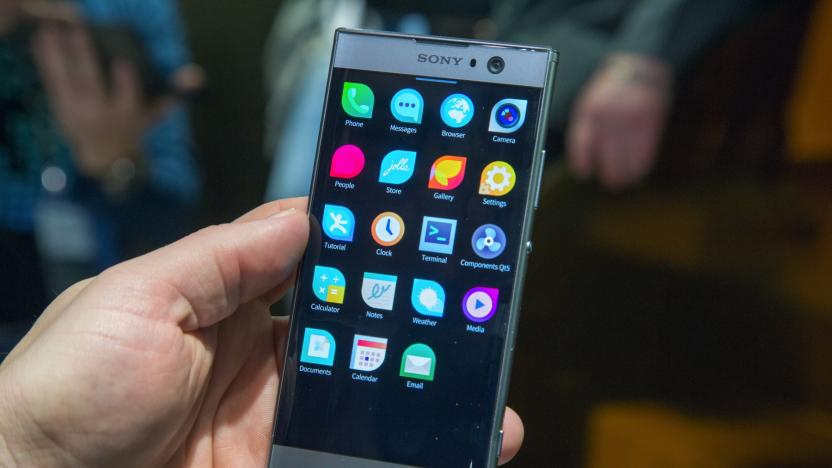
Jolla's alternative Sailfish OS is coming to more phones
It's been a long time since we've covered Jolla on Engadget, and with good reason — the company has had a tumultuous time of late. The Jolla Phone — the first hardware running its alternative Sailfish OS platform — failed to take off and its tablet was cancelled after heavy layoffs in 2015. Somehow, though, the company survived. And today at MWC, it's announcing that Sailfish OS will soon be compatible with a bunch of new devices including the Sony Xperia XA2, the upcoming Gemini PDA, and a tablet by Russian brand Inoi. In addition, it will support feature phones later this year.
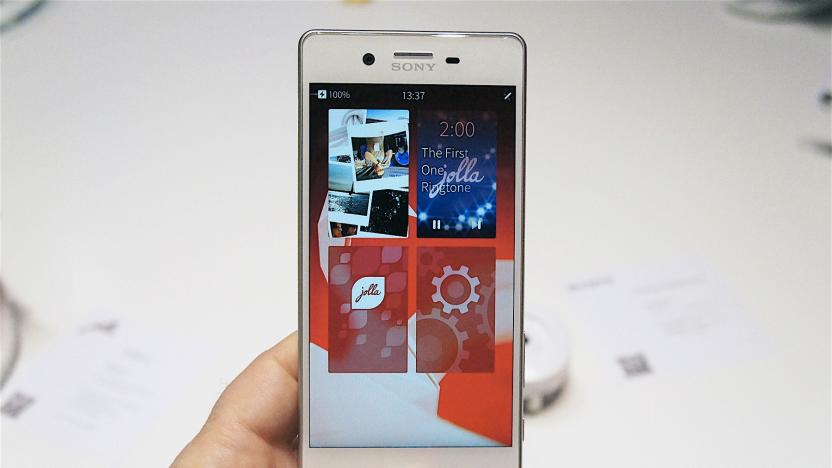
Jolla's Android alternative is coming to Sony Xperia phones
If you're a fan of Jolla (a mobile platform that's part Linux, part Android and loosely based on Nokia's MeeGo project), good news. The company has announced it will be releasing an official version of its Sailfish operating system for a number of Sony Xperia handsets. The news came from the firm's press event at MWC this morning, and adds a big-name brand to the currently mixed list of devices that the plucky (persistent?) mobile software has officially been ported to.

Jolla's latest mobile OS upgrade focuses on the basics
Jolla is going some distance to putting its Sailfish OS on more phones you can buy, but it's clear the startup still has a ways to go before you're ditching your existing device. It just released an early access version of Sailfish OS 2.1 (nicknamed Iijoki) that adds features you probably take for granted on Android or iOS. For one, you can finally copy-and-paste text in the web browser -- yes, that wasn't present before. There's also a streamlined camera app with tap-to-focus, "initial" virtual private network support, basic 64-bit architecture and the ability to change system font sizes.
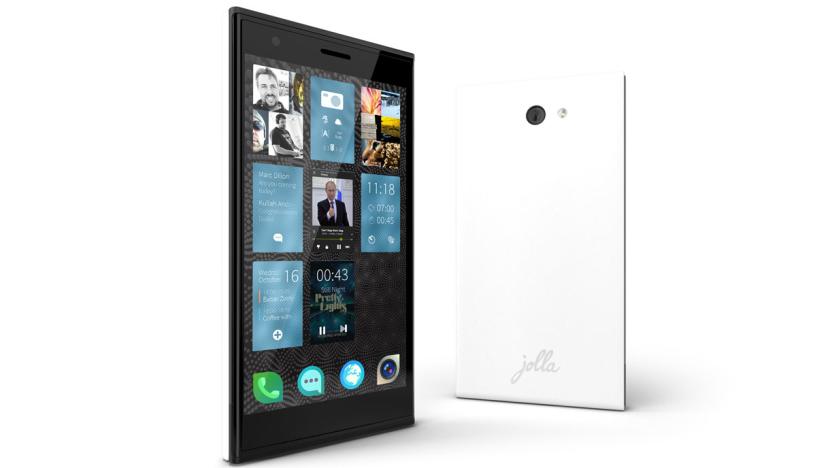
Russian government turns to the ghost of Nokia's mobile OS
Finnish software house Jolla has announced that its smartphone OS, Sailfish, has been accepted for use by Russia's government. It means that the platform -- which rose from the ashes of Nokia and Intel's doomed MeeGo -- can now be used for official government business. The company also let slip that it's in discussions to do a similar deal with leaders in South Africa and China, as well as other BRICS countries. As for why, it's probably not because Vladimir Putin was as outraged as the rest of us when Nokia axed the N9.

Jolla's 'Aqua Fish' phone quietly surfaces at MWC
So this is a surprise. Jolla, the Finnish mobile company known for its gesture-based Sailfish OS, quietly showed up to MWC with a new handset called "Aqua Fish." The Sailfish-based phone is the result of its partnership with Indian firm Intex Technologies. Aqua Fish is the first handset to come out of Jolla's licensing ambitions, which the Finnish company launched after its fumbled crowdfunded tablet launch.
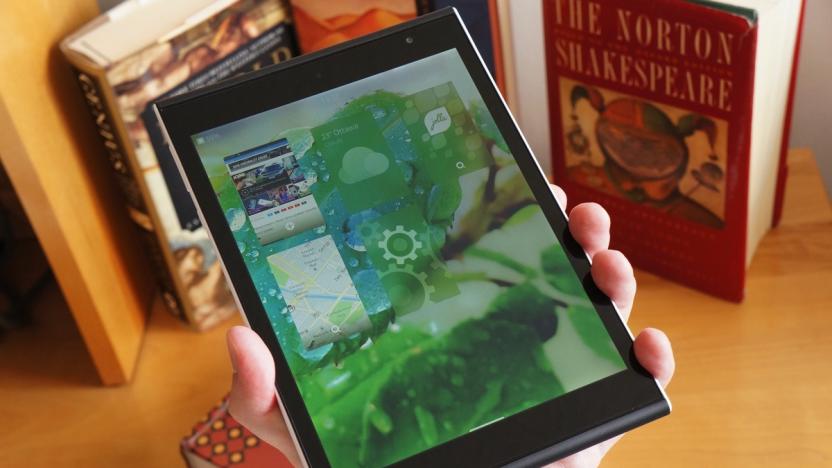
Living with the Jolla Tablet: a promising device with few apps
There's no question that the Jolla Tablet is an odd duck. It's a crowdfunded, first-generation slate running an unfamiliar platform (Sailfish OS), and some of its features are based on your input -- if enough of the Sailfish community votes for an interface tweak, you're likely to see it become reality. But does that mean this tablet is a refreshing break from the status quo, or a quirky device that will make you wish you'd bought something commonplace? I've been living with the tablet for a few weeks to find out, and the truth is somewhere in between. As you'll soon see, whether or not you'll like it depends largely on how willing you are to live on the bleeding edge.

Jolla's crowdsourced tablet is up for pre-order
The Jolla tablet started life with an interesting pitch: a crowdfunded slate with a novel, gesture-based OS, an Intel 64-bit quad-core CPU, a high resolution 7.85-inch screen and software features culled from the community's most popular suggestions. That was almost a year ago, and now the tablet is getting ready to ship. Didn't pitch in on the crowdfunding? Don't worry -- you can pre-order the tablet today for €267.

Jolla hooks up with Indian phonemaker, launches Sailfish 2.0
Jolla's Sailfish OS had a rocky start, but now it's found its first licensing partner: India's second largest phonemaker, Intex Technologies. It's even developing a regional mobile ecosystem called Sailfish India with the manufacturer and other partners (to be revealed in the future) in an effort to become a huge presence in the country. This move apparently signifies that the company's set to license its OS to more partners globally. In fact, it already built LTE devices optimized for its platform based on Qualcomm Snapdragon 200, 600 and 800, enabling future collaborators to release Sailfish phones as soon as possible.

Jolla hopes to 'focus' its mobile plans by splitting in two
Jolla's mobile efforts have barely begun, but it's already shaking things up by splitting into two companies. From now on, Jolla Ltd. is focused solely on developing and licensing Sailfish OS, its custom mobile platform. It's forming a new, as yet unnamed firm this summer for its hardware business, which sees demand from the pro-privacy crowd. As newly appointed CEO Antti Saarnio puts it, the division is all about establishing a "clear focus" -- Jolla believes that it'll require total concentration on software to take advantage of "large opportunities" for licensing its mobile platform.
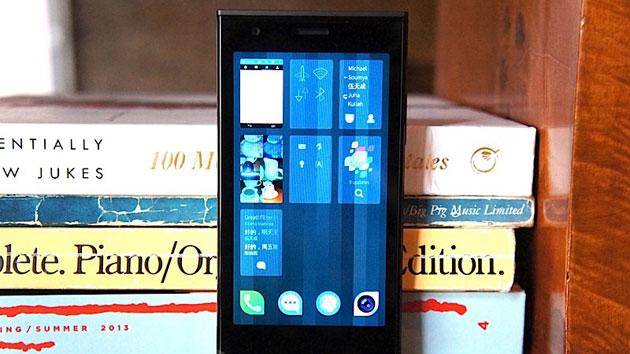
Russia is making its own smartphone platform, sort of
When Russia said it was reducing its dependence on Western technology, it wasn't kidding around. Communications Minister Nikolai Nikiforov recently met with Finland's Jolla to talk about developing an "independent" Russian mobile operating system based on Sailfish OS. He's concerned that 95 percent of phones in the country use foreign software like Android or iOS, and wants to foster a domestic platform that both boosts the economy and is less susceptible to mass surveillance. Yes, Sailfish technically comes from another country, but its open source nature would allow for customized software where there shouldn't be any secrets.

Jolla Tablet shows us what Sailfish OS is capable of
When Jolla's first smartphone debuted with Sailfish OS, it didn't leave a great impression with some of our staff. The gesture-heavy UI was confusing to newcomers and offered few advantages over rival mobile platforms. Aside from just being different, of course. Since then, however, Jolla has been quietly improving Sailfish OS to ensure it makes a splash with its first tablet. That's right: We're talking about the slate that blasted through its $380,000 crowdfunding target on Indiegogo last November. We've been hands-on with a not-quite-final build at Mobile World Congress and the impact of "Sailfish OS 2.0" is immediate. The hardware is solid, but it's the simplified navigation that stands out the most.

Jolla takes on Android with a promise not to sell your data
When Jolla launched its tablet on Indiegogo, it was an instant success. Today that tablet is being shown to the media for the first time at MWC. But, that's not all that the plucky mobile startup has to reveal. With the new tablet comes the second version of Jolla's Sailfish OS. Version 2.0 brings not only some features you'd expect (like easy scaling between phones and tablets -- to accommodate its new hardware), but also some new, bigger-picture additions like support for Intel's Atom x3 chipset, a new push into licensing with OEM hardware and a couple of direct swipes at Android, and how it gathers your data.

Jolla wants you to fund and develop its new tablet (update: funded!)
Yesterday, Jolla teased "something big" and has just revealed what that is: the Jolla Tablet with Sailfish 2.0. There's just one caveat, however -- you'll have to design and fund it yourself. It's now up on Indiegogo with a $380,000 target, and Jolla has said that it's taking suggestions from users for features, with the best ideas up-voted to make the cut, Reddit-style. Those features will likely be software tweaks or other details, as all of the main specs appear to be locked down. It'll have a 7.85-inch, 2,048 x 1,536 screen, 64-bit Intel quad-core CPU, 32GB of upgradeable memory, a 5-megapixel camera and a 4,300 mAh battery. The price will start at $189.

Daily Roundup: Mt. Gox goes offline, OS X update, Disney's new app and more!
You might say the day is never really done in consumer technology news. Your workday, however, hopefully draws to a close at some point. This is the Daily Roundup on Engadget, a quick peek back at the top headlines for the past 24 hours -- all handpicked by the editors here at the site. Click on through the break, and enjoy.

Breaking the smartphone mold isn't easy. Just ask Jolla
Jolla's got a big problem, and the company knows it. The small Finnish startup has grand plans to upend the smartphone paradigm with its modular phone and unique gesture-based OS, but that foreign approach has left some users confused. The MeeGo-derived Sailfish OS relies entirely on swipe navigation -- there are no soft keys onscreen -- and the current tutorial does a poor job of explaining how it all works. "Many people have difficulties because we suck," said Senior Designer Jaakko Roppola here at Mobile World Congress in Barcelona. "We're not very good at the first-time user experience." That candid admission may ring true for the startup now, but what Jolla is exceedingly good at is listening to and quickly addressing community feedback. That eagerness to please has not only led to recent improvements in battery life and connectivity for the nascent operating system, but also the integration of a user-created WiFi hotspot option.

Daily Roundup: the future of the smartwatch, MWC 2014 and more!
You might say the day is never really done in consumer technology news. Your workday, however, hopefully draws to a close at some point. This is the Daily Roundup on Engadget, a quick peek back at the top headlines for the past 24 hours -- all handpicked by the editors here at the site. Click on through the break, and enjoy.









